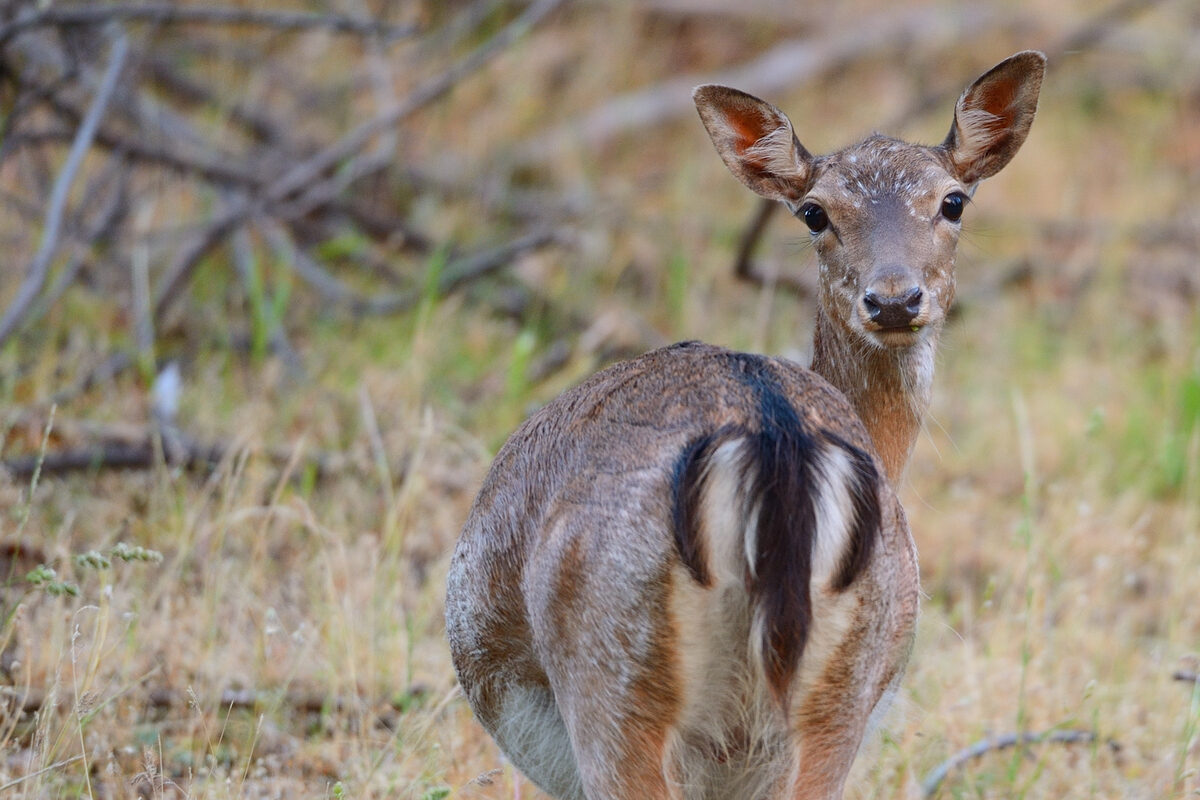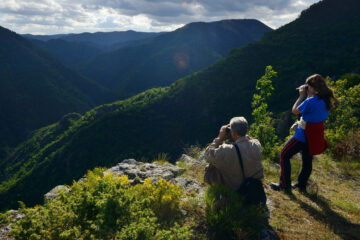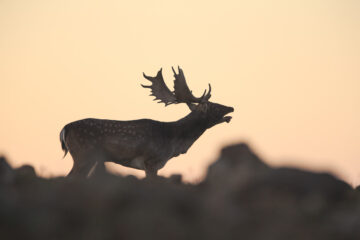Over the last few months, more than 80 fallow deer have been released into the Rhodope Mountains rewilding landscape in Bulgaria. Adding to the populations of deer already released by the local rewilding team, the animals will enhance wild nature and help to generate economic benefits.

Restoring natural processes
Rewilding works to recover and enhance natural processes, such as natural grazing, predation and scavenging. Restoring these processes often requires the reintroduction and restocking of missing or degraded wildlife populations. This, in turn, helps to create more resilient, fully functioning ecosystems, which are more capable of delivering a wide range of benefits to people, such as clean water, flood protection, and the locking up of atmospheric carbon.
In the Rhodope Mountains rewilding landscape in southern Bulgaria, for example, the ongoing restocking of fallow and red deer herds is supporting predation, scavenging and natural grazing. Local wolf populations prey on the deer, which boosts the availability of wild carcasses for the area’s endangered vulture species (griffon, cinereous and Egyptian), thereby helping to close the so-called “Circle of Life“. At relatively low density, free-roaming deer also help to create open habitats that can help a wide range of other wildlife species thrive.

Towards population viability
These positive impacts are set to be enhanced, with the Rewilding Rhodopes team releasing 81 fallow deer over the winter period. In collaboration with local partners, the team has been working for many years to re-establish viable populations of both red and fallow deer in the rewilding landscape, with more than 500 fallow and 50 red deer now reintroduced at different sites. Red and fallow deer populations both need to contain at least 50 adult animals to be considered viable.
“Our goal is to restore the fallow deer throughout the Eastern Rhodopes,” says Stefan Avramov, a rewilding officer attached to the Rewilding Rhodopes team. “Our future plans include the release of hundreds more deer in different areas and municipalities in the Bulgarian Rhodope Mountains, including Kardzhali, Momchilgrad, Kirkovo, Krumovgrad, Harmanli and Ivaylovgrad.”
Recently collected monitoring data shows that deer rewilding efforts are already paying off, with populations of both species increasing and dispersing across the landscape. In January, 50 red deer were counted by the team in Studen Kladenets, in the centre of the Rhodope Mountains rewilding landscape – from this it can be assumed that the population already exceeds 130 animals, scattered throughout the Eastern Rhodopes.


The people perspective
The reintroduction of deer species also boosts the appeal of the Rhodope Mountains as a destination for nature-based tourism. This allows local entrepreneurs and communities to benefit economically from the restoration of wild nature. The area’s burgeoning griffon vulture population, which is benefitting from the reintroduction, is a particularly important tourism drawcard.
The newly reintroduced deer are also proving a firm favourite with photographers and wildlife enthusiasts. Their popularity will no doubt increase as their numbers continue to grow and they become an increasingly common sight once again in the woodlands of the Rhodopes.
